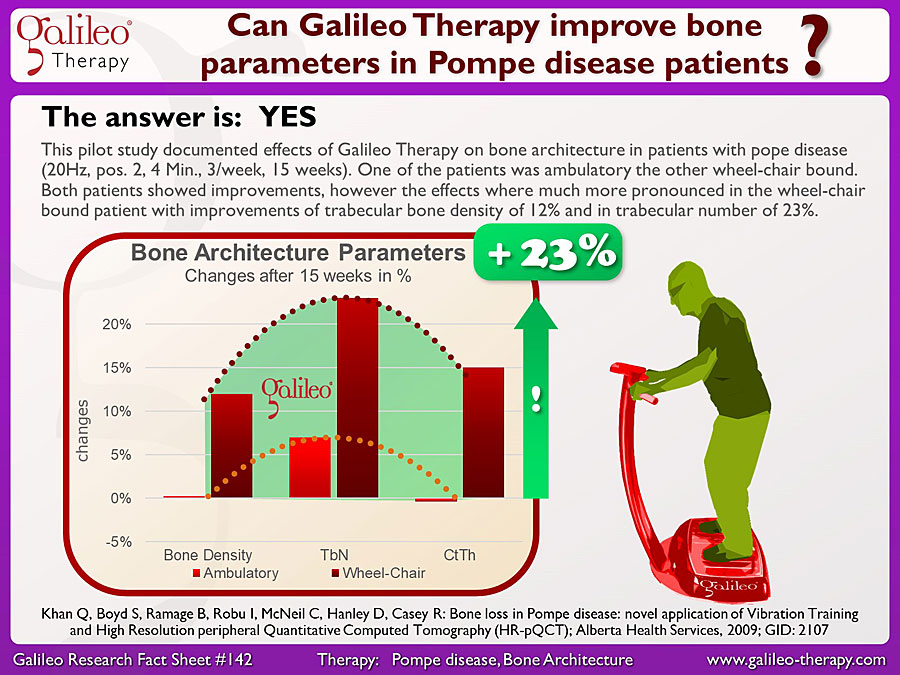Galileo Research Facts No. 142: Can Galileo Therapy improve bone parameters in Pompe disease patients?

This pilot study documented the effects of Galileo Therapy on bone architecture parameters in patients with Pompe disease (degenerative metabolic disease, which mainly massively reduce muscle function). Two patients where reported, one ambulatory, the other wheel-chair bound. Both patients received over a period of 15 weeks, 3 times per week Galileo Therapy for 4 minutes only (20Hz, position 2, slightly flexed legs).
Both patients showed improvements in different bone architecture parameters measured by HRpQCT. The wheel-chair bound patient however, showed much higher effects on bone with increases in trabecular bone density by 12%, in trabecular number by 23% and in trabecular thickness by 15%.
The used exercises at 20Hz with only slightly flexed legs can be considered as very low intensity, which was still enough to cause high positive effects in the deconditioned wheelchair bound patient but not for the ambulatory patient. In his case the intensity was only enough to prevent further loss. To cause improvements a higher intensity would have been needed – for example 25 to 30Hz (starting with small amplitudes) and increasingly larger knee-angles over time. Similar settings were reported to show improvements in muscle function e.g. in COPD patients (#GRFS32, #GRFS124) or increases in bone mass in the elderly (#GRFS76, #GRFS48).
#GRFS142 #GalileoTherapy #MechnoStimulation #PompeDisease #MorbusPompe #BoneParameters #BoneDensity #BoneArchitecture #BoneMass